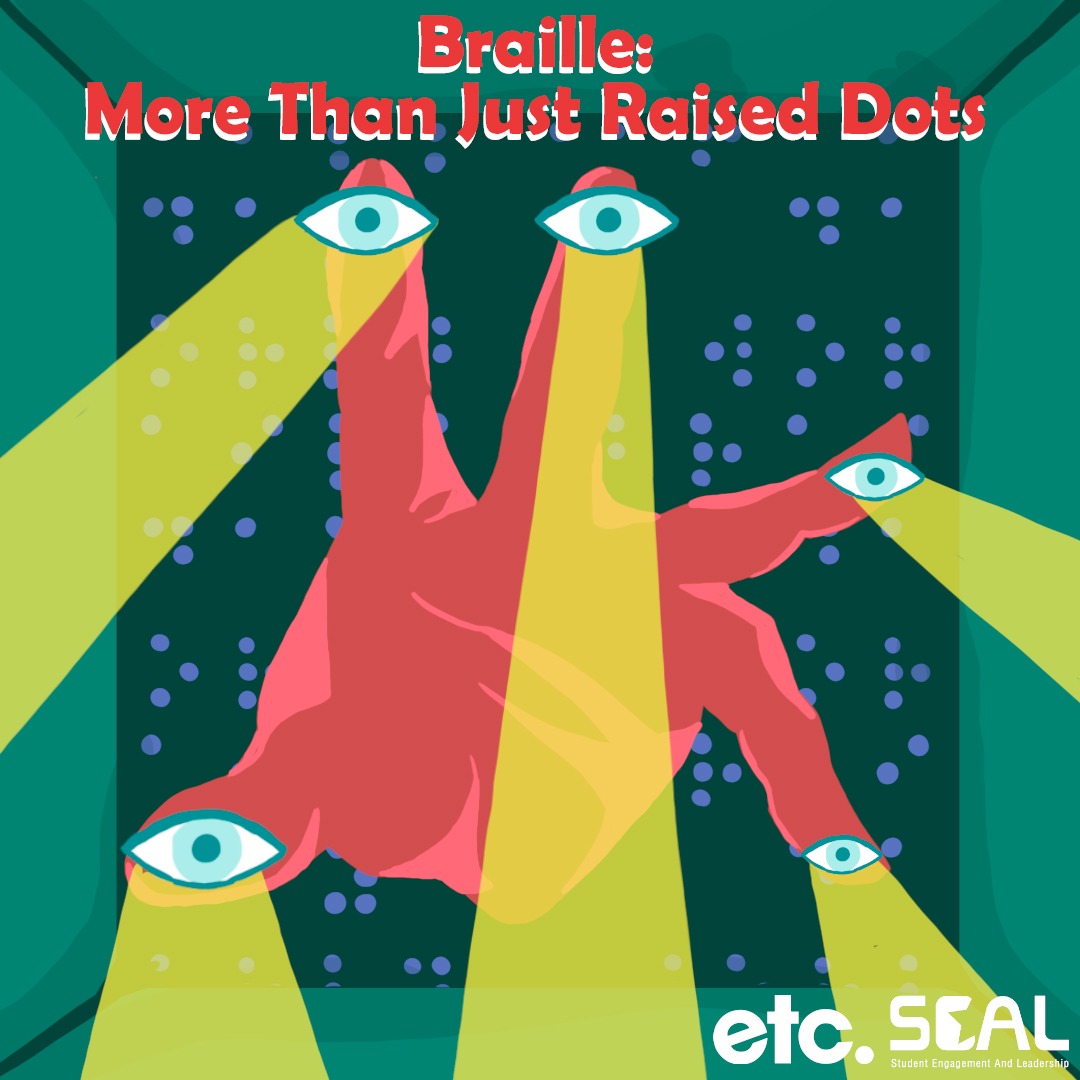Braille: More Than Just Raised Dots | By Tiffany Chan
 |
| Illustration by Jessica Peggy Riekert. |
When someone says ‘braille’, the first thing that comes to my mind is the small raised dots on elevator buttons. Sadly, even though braille is such a vital tool for the blind and visually impaired to navigate the world, I can’t recall it being used anywhere else.
What Braille Is
To understand why braille is so important, we must first know what it is. Braille is defined as “a system of touch reading and writing for blind persons in which raised dots represent the letters of the alphabet”. It consists of ‘cells’ that are made up of 2 columns of 3 embossed dots arranged in a rectangle, with each cell representing an alphabet or print sign. These dots may be raised at any of the 6 positions and can form 64 different combinations.
 |
| Source: Daily Express |
A fun fact about braille: the system was invented by Louis Braille, who lost his sight at a very young age. Inspired by Charles Barbier’s Night Writing, he began working on braille at the tender age of 11 and spent the next nine years refining the system. To top that off, Louis used braille to pass notes among his friends during his schooling years, a form of secret communication that he invented. Now, isn’t that cool
What Braille Isn’t
Though it may seem like a completely foreign set of symbols, braille isn’t a different language. It’s merely an alternative set of tactile symbols for the language of the user, be it English, Spanish, Chinese, or many more.
If, like me, you were wondering: why was braille invented instead of just embossing alphabets? Well, the answer is simple: raised alphabets were near impossible for the blind and visually impaired to read. This is because there were too many similarities between the alphabets, for example, Q and O, G and C. The braille dots, however, were easily distinguishable and much easier to feel.
 |
| Source: Brailleworks |
Another misconception people tend to have about braille is that it’s for educational pursuits only. This is simply not true. Braille for the blind and visually impaired is the equivalent of written words for the sighted. Aside from studying, there are tons of other things that require printed words, such as signboards, notices, legal documents and many more.
The ability to read and write is also crucial for the more mundane parts of life, such as reading product labels. Can you imagine having two bottles that feel identical, yet one contained oil and the other detergent? Having braille embossed on the labels would help the blind or visually impaired quickly distinguish between these bottles.
Braille Is Very, Very Important
Today’s text-to-speech technology has indeed made things much easier for the blind and visually impaired, but it can never replace the need for reading and writing. For one, braille teaches the rules of grammar and punctuation, which would be impossible to learn through audio alone. The braille code is also crucial for those who have to read large amounts of text and numerals, such as an accountant or finance manager. Text-to-speech would simply be too slow for them.
 |
A Refreshable Braille Display for quiet reading, proofreading and working with large numbers. Source: RBA Consulting |
Many who lose their sight later in life may not see the need for braille, or have the motivation to learn it. But if you have loved ones who are blind or visually impaired, you should encourage them to learn braille, because even a basic knowledge of it would be a great help in everyday life. Braille would act as a huge confidence booster as they can accomplish tasks like reading a menu or receipt on their own.
Today is World Braille Day (if you didn’t know, now you do!). But today shouldn’t be the only day we talk about braille. As I mentioned earlier, it’s sad to see how rarely braille is used in Malaysia. Yes, there are the elevator buttons, but what about food menus? Door signs? Product labels? Embossing braille on these items would make independent living much easier for the blind and visually impaired.
And that’s why we need to make braille more accessible. There is a need for more teachers who are qualified to teach, as well as resources for learners. If you have a loved one who is blind or visually impaired, take up learning simple braille yourself. This would greatly motivate them to invest their efforts in the code.
Unfortunately, braille printing is costly, and not all businesses can afford it for their products or services. But what we can do is write to our Members of Parliament to raise the concern of braille inaccessibility. Donating to organisations such as the Malaysian Association of the Blind (MAB) and St Nicholas’ Home Penang (SNH) is also a great way to support braille education and implementation.
Thanks to braille, losing one’s sight does not mean losing the ability to read or write completely. Let us never take either of these things for granted, whether we are sighted, blind or visually impaired.






2 comments
Amazing post!
ReplyDeleteI was never aware of Braille being alternative medium to understanding the same language. I kept thinking of it as a whole new language.
Overall loved it. Big fan!
Thank you so much! Your kind words mean a lot to me :) Learned a lot from writing this article too - writer
Delete